In this excerpt from the Carlos “El Loco” Bedoya video, “Loco Bedoya Mixing Ricardo Arjona,” he describes how he processed a cajón track.
For those unfamiliar, a cajón is an acoustic percussion instrument that consists of a rectangular wooden box that the player sits on and plays with his or her hands, usually by slapping the front of it. Many cajóns feature snare-like wires that are installed inside near the top, so playing in that area sounds a lot like a snare drum. Because slapping the lower part of the cajón sounds like a kick drum, the player can get a simulated drum kit sound from hitting top and bottom. However, the cajón part Bedoya is mixing in this video is reminiscent of a programmed kick.
DOES IT RESONATE WITH YOU?
Bedoya says he has a “pet peeve” with cajóns. He describes the instrument derisively as a “piece of wood,” but explains that many people in the Latin music world love it.
The cajón part in this song occurs only on downbeats for a total of four measures, near the beginning. Bedoya notices that it’s got an undesirable overtone resonance. Working in MOTU Digital Performer, he opens the built-in Masterworks EQ plug-in and cuts about 3 dB at about 125 Hz, with a pretty narrow Q to deal with the resonance. He also sets a boost of about 2 dB at 5 kHz with a reasonably wide Q setting, to give it a little extra brightness.
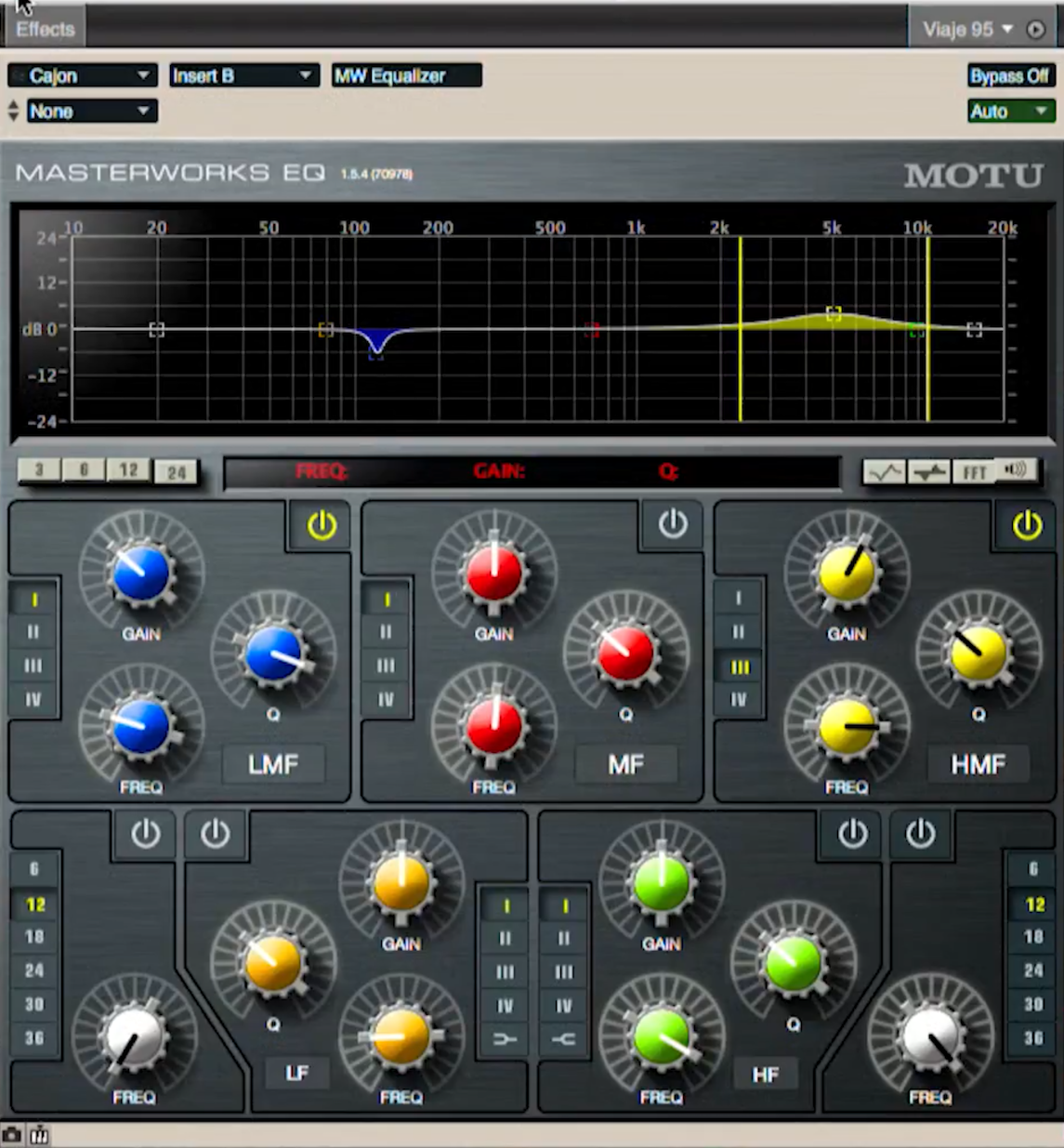
Bedoya used this setting, with a slight cut in the low end and a boost in the highs for the cajón track.
Bedoya obverses that he might have used a high-pass filter on the cajón if it was in a busy part of the song. But since there are not a lot of other tracks going on when it enters, he says “Let the cajón rumble.”
For ambience, Bedoya sends the cajón to an aux track with MOTU Digital Performer’s built-in ProVerb convolution reverb inserted, with a nightclub impulse response setting selected.
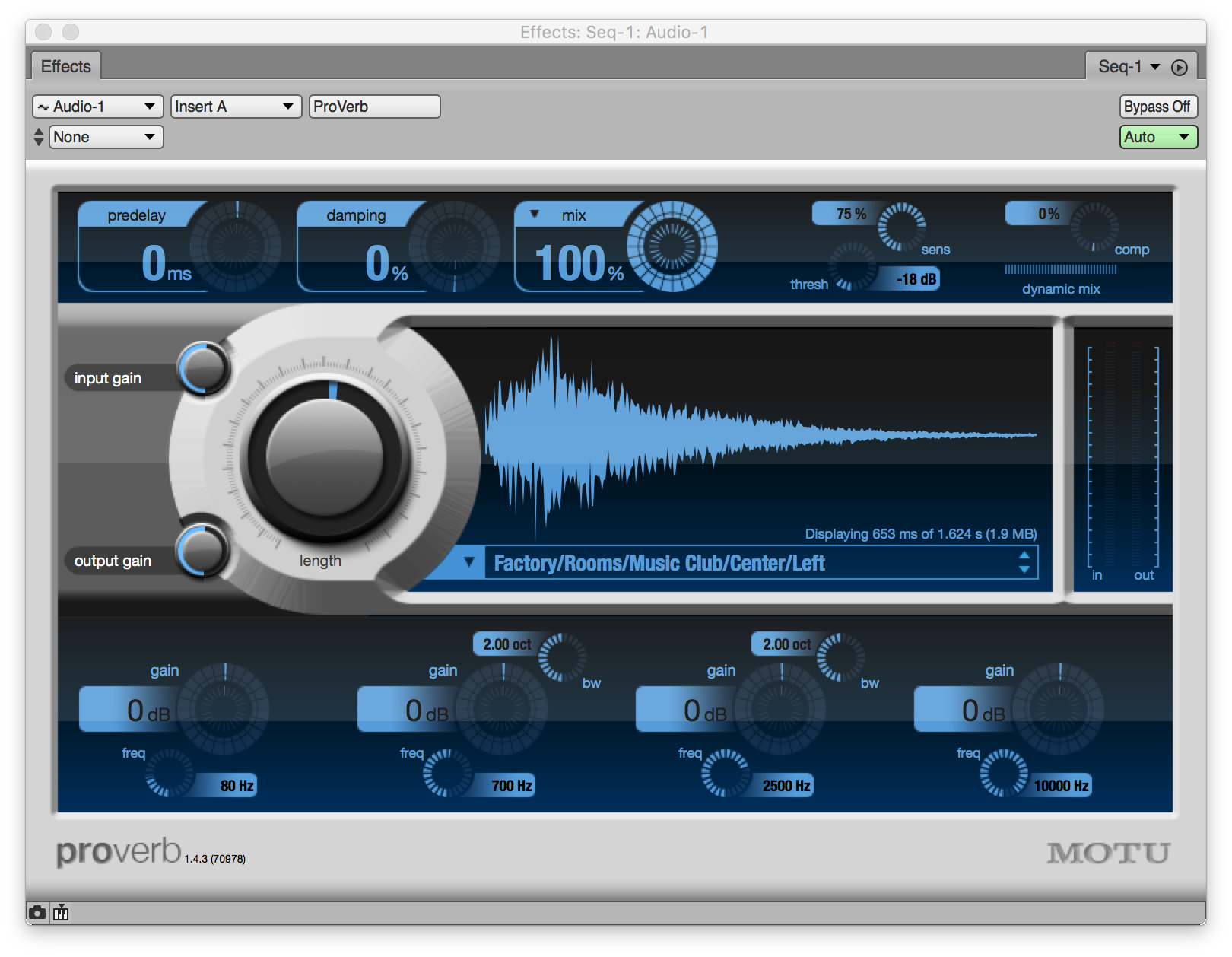
For the cajón track and other instruments in the mix, Bedoya used ProVerb, a convolution plug-in that comes with Digital Performer, as an aux effect.
INTO SPACE
Bedoya doesn’t say why he chose a convolution reverb for this application, but it wouldn’t have been surprising if he’d used an algorithmic reverb instead, as both are capable of realistic simulations of different types of spaces.
A convolution reverb uses impulse responses, which are sampled acoustic spaces, as the basis for its sounds. An algorithmic reverb features digital emulations of the spaces. The difference is similar to, say, that between a sampled piano and a physically modeled one. The former uses actual recordings of a piano, and the latter creates its sound with digital algorithms designed to simulate what a piano sounds like.
While you might think that a convolution reverb would be a lot more accurate, that’s not necessarily the case. When you’re dealing with high-quality reverb plug-ins, you can find great sounding examples of both convolution and algorithmic reverbs.
START A CONVOLUTION
The most significant advantage to a convolution reverb is that it can accurately emulate the reverberant characteristics of actual physical spaces. Convolution reverbs create their effects by convolving (in essence, combining) the incoming audio with an impulse response that was captured in a particular acoustic environment, which makes the audio sound like it’s in that space.
For example, your convolution reverb might offer impulse responses consisting of anything from row 11 at Carnegie Hall to Studio A at Avatar Studios to the inside of a Ford Fiesta. They’re great if you want to get really specific with the type of ambience you’re adding. They also offer IRs of non-specified chambers, plates, rooms, halls and more.
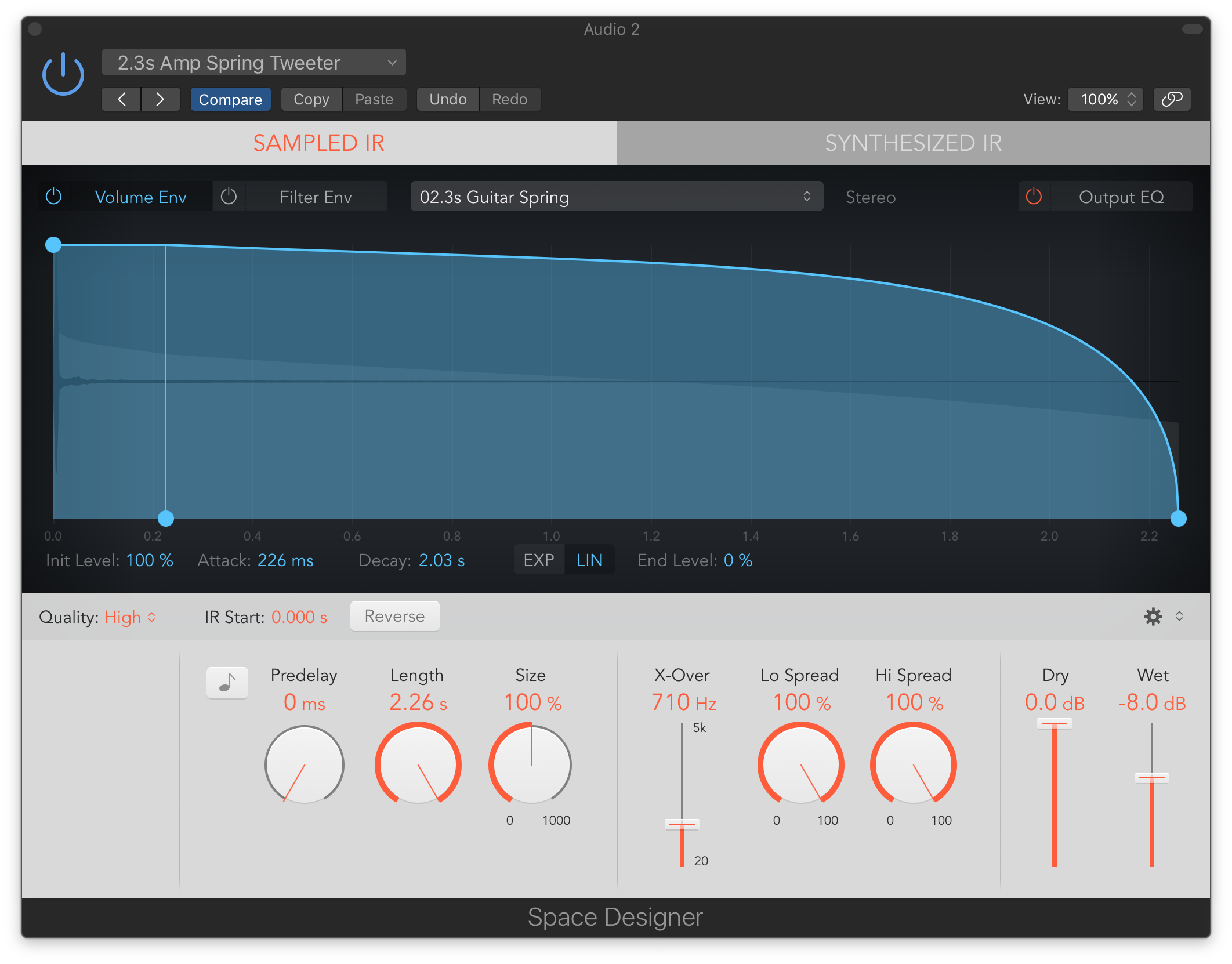
Space Designer is a convolution reverb that comes with Apple Logic Pro X.
Another advantage of convolution reverbs is that you can typically import third-party IRs, some of which are available for free online. For example, Simplicity offers a free collection of IRs of the Bricasti M7, an expensive hardware reverb.
You can also use convolution reverbs for sound design by convolving your audio with IRs of unusual spaces such as the inside of a vacuum cleaner or a clock-radio speaker or almost anything.
The disadvantages of convolution reverbs are that they tend to be more CPU intensive than algorithmic reverbs, they don’t have as many editable parameters, and some can be pretty expensive.
Example 1: Here’s a four-measure rhythm guitar part that plays twice. When it repeats, it’s being processed with a transistor radio speaker IR from Logic Pro’s Space Designer reverb.
Example 2: You’ll hear a vocalist singing a 4-bar part, three times. The first time with just some room sound from the recording, the second time with Logic Pro’s Space Designer with a Marble Church IR, and the third time with Space Designer’s Cave IR.
PICK A NUMBER
Unless it’s important to you to recreate specific spaces or create unusual convolution effects, you might be just as happy with an algorithmic reverb. They achieve their sound with mathematical algorithms and can create extremely high-quality results. Your DAW includes one, and there are a lot of high-quality third-party reverb plug-ins if you want to upgrade. What’s more, some of the classic studio hardware reverbs by companies like Lexicon, Eventide, and EMT were algorithmic, and you can get the same or remarkably similar algorithms in plug-in form.
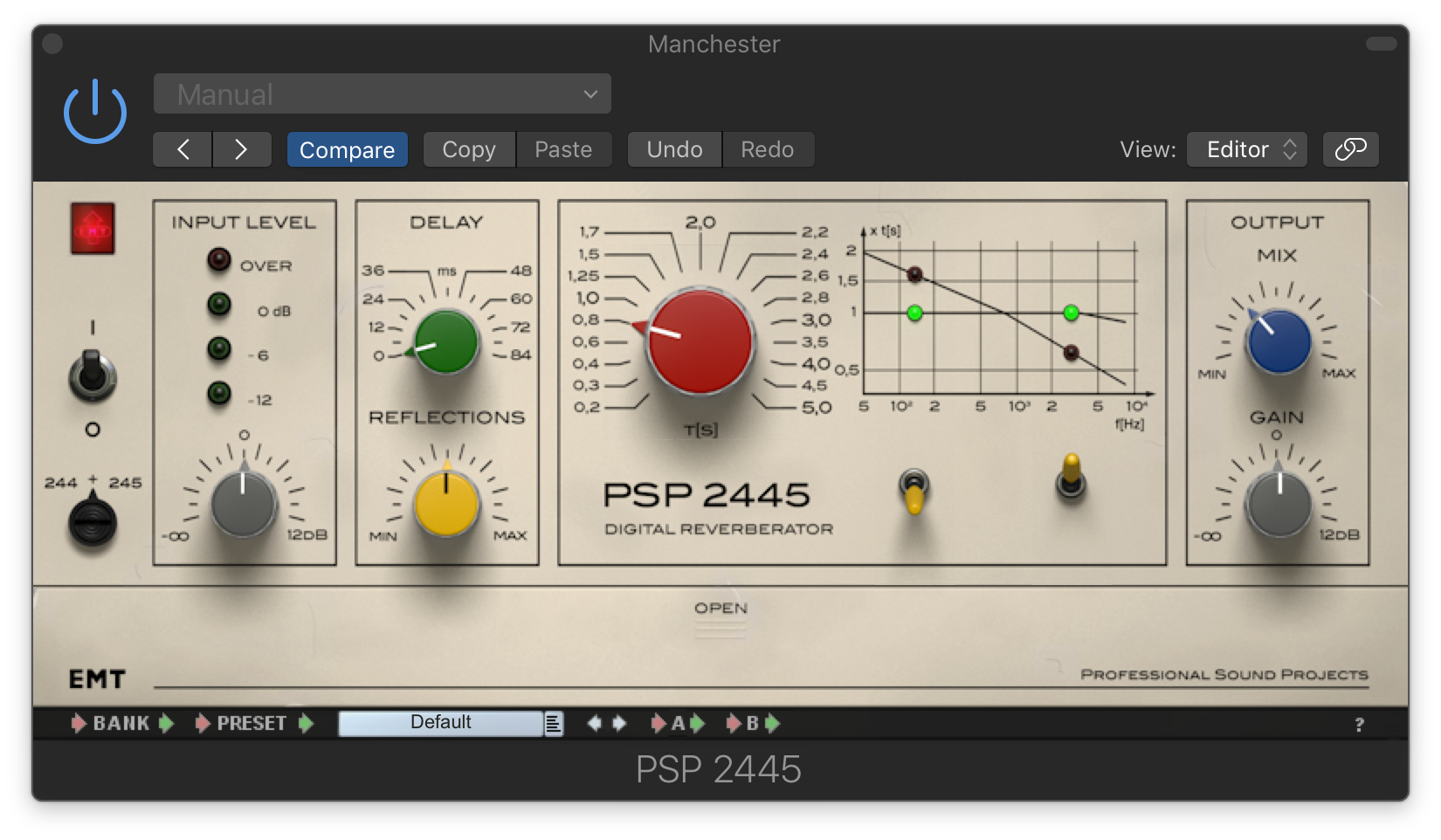
The PSP 2445 is an algorithmic emulation of two classic EMT digital reverberators.
For example, PSP makes the 2445, which emulates two EMT outboard digital reverbs from the 80s, the 244 and 245. There are also excellent Lexicon 480L emulations, such as the Relab LX480.
There are many superb algorithmic emulations of reverb plates, including the UAD Plate 140, and Valhalla Plate, and Waves Abbey Road Plates, to name just a few. Eventide’s TVerb uses algorithms to replicate the sound of Berlin’s Hansa Tonstudios and includes three virtual mic channels that can be mixed, and you can even reposition the mics.
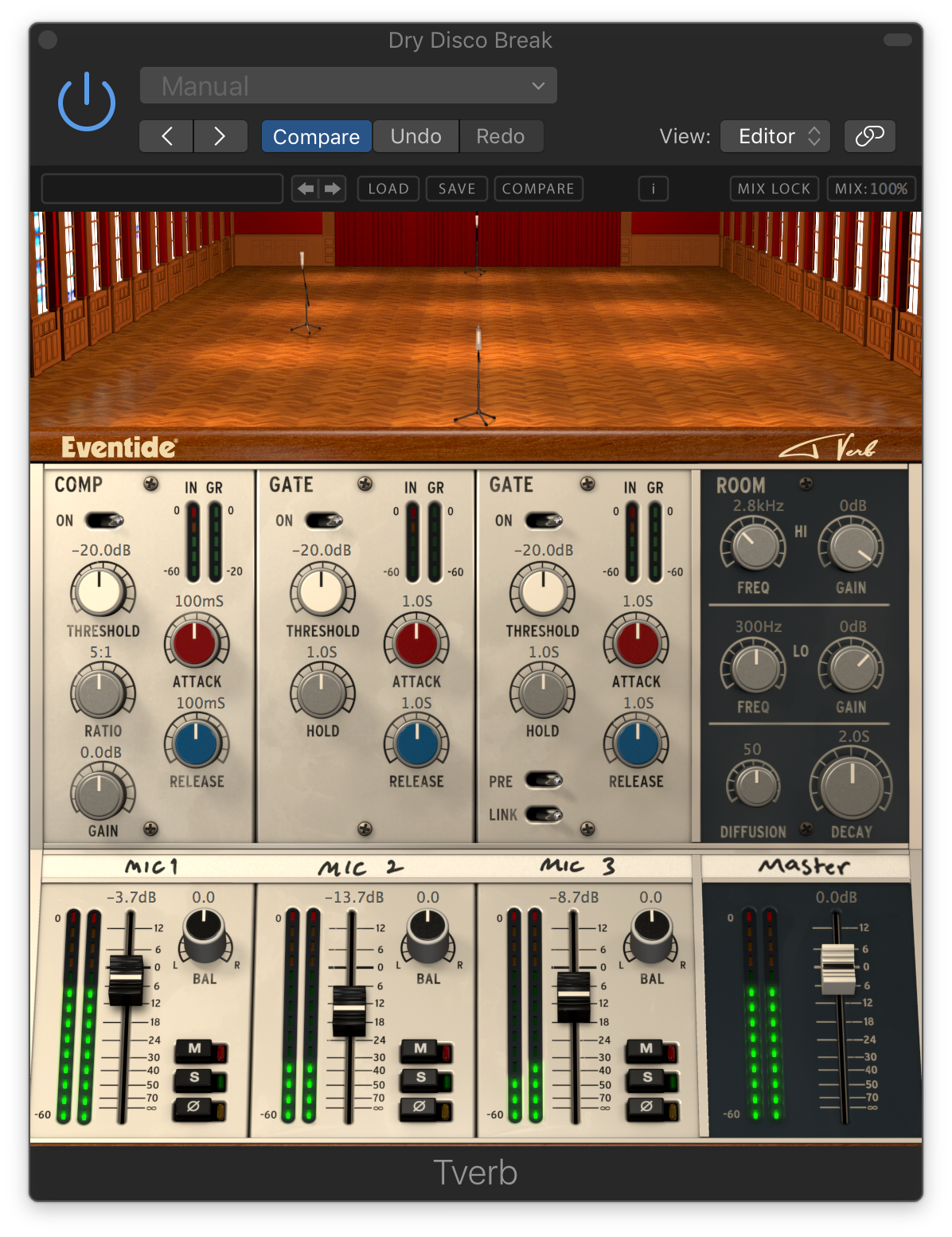
Eventide’s TVerb is an algorithmic reverb that gives you control over a virtual studio space with multiple microphones.
Example 3: Here’s a drum loop with minimal ambience for the first four bars and then PSP’s 2445 kicks in with a 1-second-decay plate setting.
In addition to being more CPU efficient than convolution reverbs, algorithmic reverbs typically offer more adjustable parameters, and some even provide powerful modulation features that allow you to really get creative. However, unlike a convolution reverb, you can’t expand the sonic palette of an algorithmic reverb with third-party sounds like you can with convolution reverbs.
Whether you choose algorithmic or convolution reverbs is more a matter of taste and work style than anything else. In a way it’s kind of a false choice, because using one type doesn’t preclude you from using the other—even in the same song.